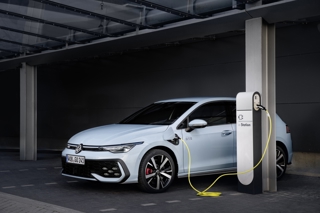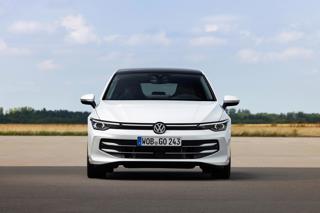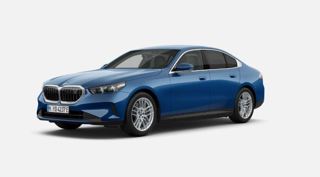There were more than 300 vehicles to drive at CCIA from 26 manufacturers. Fleet News assembled a team of fleet managers from some of the country’s biggest fleets to help us assess some of the latest and most popular models at the event.
Who joined us?
- Stewart Lightbody, head of fleet services at Anglian Water
- Keith Cook, deputy financial controller at Computacenter
- Paul Tate, commodity manager at Siemens
Vauxhall Insignia Grand Sport
Model Tested: 1.6 litre Turbo D EcoTec 110PS
Perhaps one of the most important cars at CCIA was the new Vauxhall Insignia. The old model was a big hit with corporate buyers and Vauxhall expects this model to achieve a 90% fleet mix.
We tried the most efficient model in the range, having already tested the 136PS and 170PS versions.
Stewart Lightbody commented that the engine felt underpowered and struggled on the more demanding sections of the hill route. However, on the high-speed bowl he thought the Insignia felt more at home cruising at motorway speeds.
The car emits 105g/km of CO2, which is high considering its status as the eco-champion. Vauxhall says this is because the car has been developed for the upcoming real-world driving tests, where it is expected to excel. Nonetheless it still returns an average of more than 70mpg if driven carefully.
“Cosmetically it’s a big step forward, but the interior isn’t a million miles away from that of the existing model,” said Lightbody.
Paul Tate added: “I like the interior but the air con controls are a bit fiddly and require you to press buttons and use the touchscreen – it’s just not intuitive.”
The new insignia is larger than before and Vauxhall have designed it to compete in a more premium arena. Despite this the list price is extremely competitive, with prices starting at £17,115.
In Tech Line trim the Vauxhall Insignia Grand Sport 1.6 Turbo D 110PS costs £21,025. It comes with front and rear parking sensors and sat-nav with OnStar connected services. Company car drivers will pay £967 per year in BIK tax and the car will cost 30.93 pence per mile to run over four years or 80,000 miles.
Volkswagen Golf
Model Tested: 1.0T SE NAV 110PS
Volkswagen introduced the new Golf at the beginning of the year and the facelift model is another excellent evolution of the one that went before it.
Once inside it’s a case of business as usual and anyone familiar with Golfs of the past should be able to get quickly acquainted.
There’s a brace of engines available including an ultra-frugal 1.6-litre diesel, but in this we test we opted for the new three cylinder 1.0-litre turbo petrol unit.
Keith Cook came back from his test drive and was staggered to find out it was powered by a 1.0-litre engine.
He said: “Having driven the 2.0TDI variant for the past few years I would say there wasn’t much difference between them. The performance and handling was excellent.”
Stewart Lightbody added: “The engine is a real delight and the exhaust note is more positive than in diesel versions. It engages people back into driving.”
There is real character to the way the three-cylinder delivers its power and all our fleet managers felt the 110PS output to be more than enough for the car. By ditching a heavy diesel engine the Golf feels light and nimble, offering a great driving experience.
The petrol-powered Golf becomes more interesting when you compare its running costs with the diesel equivalent. At £20,065 it’s £1,800 less than the 1.6 TDI in the same trim. It also saves the driver £200 per year in BIK tax, costing £800 for the 20% taxpayer. Running costs are lower, too, at 29.32 pence per mile versus the diesel at 30.26p.
Lightbody said he has been looking at the viability of petrol on fleet, as did Cook. Both conceded that the Golf 1.0T is a great example of how the industry could shift away from diesel in a cost-effective way.
Peugeot 3008
Model tested: 2.0 BlueHDI 150 GT Line
There was no shortage of crossovers to try at this year’s CCIA, the facelifted Nissan Qashqai made its UK debut along with big sellers such as the Seat Ateca, Kia Sportage and Ford Kuga.
We decided to give the Peugeot 3008 a try as is offers a more driver-focussed package than traditional SUVs in the same price bracket.
The 2.0-litre BlueHDI engine delivers 150PS and is combined with a nimble chassis and light body. Performance is strong but the 3008 is also frugal. It emits 114g/km of CO2 and manages to achieve 64.2mpg on the combined cycle.
Stewart Lightbody and Paul Tate both agreed that the 3008 has great styling but for Tate it was the seats that he found most impressive. The entire cabin is set up to feel like a sports car so the centre console sits high, cocooning the driver. Lightbody was less impressed and felt the gear lever was too high.
The oddest thing about the 3008 is its small steering wheel which is flat at the bottom and the top. It’s a bit like using a games console wheel. It does give excellent steering feel though, making the 3008 drive like a go-kart.
Tate likened the dash-mounted toggle switches to a piano, they do give a minimalistic feel to the interior but are not clearly marked and are used to control all the main functions such as radio, navigation and climate control.
The digital instruments won more praise and were likened to those in the latest Audis.
Our GT Line test car was priced at £29,030. It comes with 18-inch alloy wheels, LED headlights and a sports styling kit. BIK tax starts at £1,393 per year for a 20% taxpayer while running costs average out at 38.63 pence per mile over four years or 80,000 miles.
BMW 5 Series
Model tested: 530e iPerformance M Sport
The plug-in hybrid version of BMW’s newest 5 Series is the latest derivative to be launched. It uses a 2.0-litre turbocharged petrol engine twinned with an electric motor.
Running on battery power alone, the car can achieve a range of around 30 miles but the real selling points of this car are its 9% BIK rate and combined power output of 250PS.
“I’m genuinely surprised by how good that is,” said Keith Cook. He added: “The driving experience is delightful.”
Stewart Lightbody confessed he isn’t a big BMW fan, but he was won over by the 530e.
“It’s effortless. Super quiet and super smooth,” he said.
Both fleet managers had concerns over the achievable fuel consumption though. BMW claim an average of 141mpg but it’s likely the realistic figure is closer to 40mpg for drivers who don’t use the battery range to its full potential.
“People will like the low benefit-in-kind rates but some, especially those with fully expensed fuel cards, are liable to abuse it,” warned Cook.
Lightbody added: “In the right hands it makes a lot of sense. I could definitely see some of our directors swapping out their 520ds for these.”
The 530e is extremely discreet about its hybrid status. The only visual giveaway is the charging point flap on the passenger side front wing. When you start the car it sets off in silent fully electric mode and can reach speeds of 87mph before needing to fire up the petrol engine.
Give the 530e a firm prod with your right foot from standstill and it can hit 60mph in just 6.2 seconds.
In sportier M Sport trim the 530e costs £47,230 but the Government will subsidise £2,500 of this through a grant. Its CO2 emissions of 46g/km mean BIK tax cost just £1,700 per year for a 40% taxpayer. However running costs are much higher. Over a four year cycle the 530e costs 60.48 pence per mile when a similar spec 520d will cost 47.02p.





















Login to comment
Comments
No comments have been made yet.